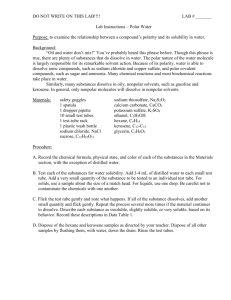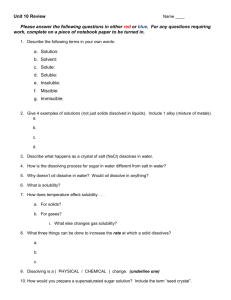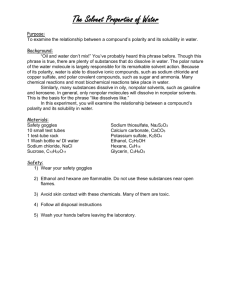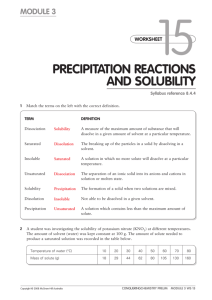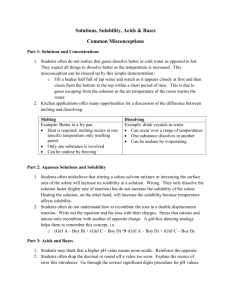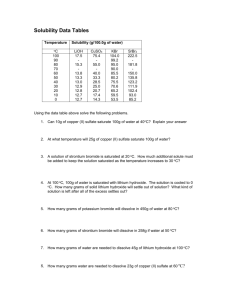Water Solubility Lab: Polarity & Solvents
advertisement
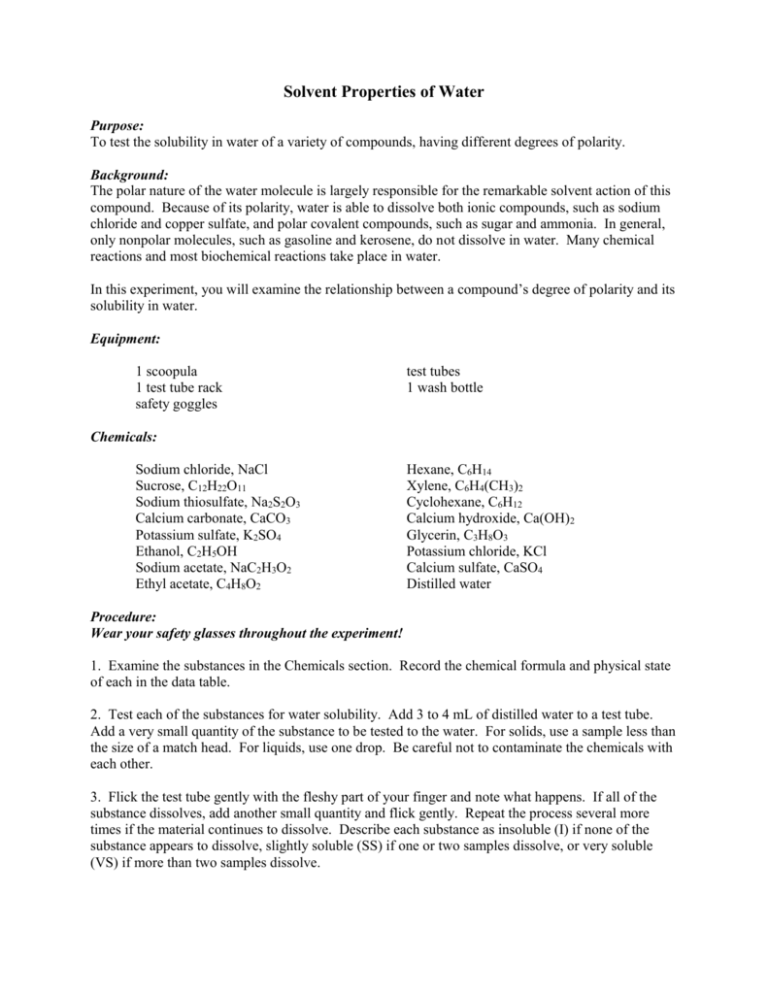
Solvent Properties of Water Purpose: To test the solubility in water of a variety of compounds, having different degrees of polarity. Background: The polar nature of the water molecule is largely responsible for the remarkable solvent action of this compound. Because of its polarity, water is able to dissolve both ionic compounds, such as sodium chloride and copper sulfate, and polar covalent compounds, such as sugar and ammonia. In general, only nonpolar molecules, such as gasoline and kerosene, do not dissolve in water. Many chemical reactions and most biochemical reactions take place in water. In this experiment, you will examine the relationship between a compound’s degree of polarity and its solubility in water. Equipment: 1 scoopula 1 test tube rack safety goggles test tubes 1 wash bottle Chemicals: Sodium chloride, NaCl Sucrose, C12H22O11 Sodium thiosulfate, Na2S2O3 Calcium carbonate, CaCO3 Potassium sulfate, K2SO4 Ethanol, C2H5OH Sodium acetate, NaC2H3O2 Ethyl acetate, C4H8O2 Hexane, C6H14 Xylene, C6H4(CH3)2 Cyclohexane, C6H12 Calcium hydroxide, Ca(OH)2 Glycerin, C3H8O3 Potassium chloride, KCl Calcium sulfate, CaSO4 Distilled water Procedure: Wear your safety glasses throughout the experiment! 1. Examine the substances in the Chemicals section. Record the chemical formula and physical state of each in the data table. 2. Test each of the substances for water solubility. Add 3 to 4 mL of distilled water to a test tube. Add a very small quantity of the substance to be tested to the water. For solids, use a sample less than the size of a match head. For liquids, use one drop. Be careful not to contaminate the chemicals with each other. 3. Flick the test tube gently with the fleshy part of your finger and note what happens. If all of the substance dissolves, add another small quantity and flick gently. Repeat the process several more times if the material continues to dissolve. Describe each substance as insoluble (I) if none of the substance appears to dissolve, slightly soluble (SS) if one or two samples dissolve, or very soluble (VS) if more than two samples dissolve. 4. Dispose of the organic liquids (xylene, cyclohexane, ethyl acetate, hexane, and glycerol in the waste beaker in the fume hood.
